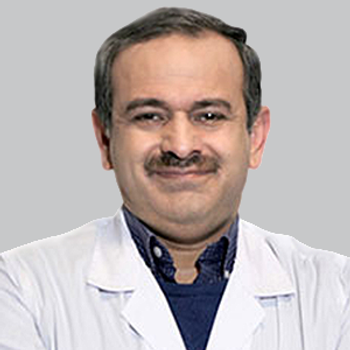
NMOSD Acute Attack Prevention
An overview of newer preventive therapies approved for acute attacks of neuromyelitis optica spectrum disorders, and variables that impact treatment selection.
Episodes in this series

June Halper, MSN, APN-C, MSCN, FAAN: What about the newer drugs hitting the market or on the market now, like eculizumab? Are those more long term rather than acute?
Brian G. Weinshenker, M.D.: Yes, they are. Perhaps the most important thing that we do in patients with neuromyelitis optica [NMO] is once we recognize this condition ideally at a very early point, which we can do now aided with this widely available antibody test, we would immediately start the patient on a medication to prevent attacks. We have a number of options. Since 2019, we now have three drugs that are FDA approved, that have gone through phase 3 clinical trials, so the most rigorous clinical trials that are required by the FDA to approve agents. They are very different. They’re all antibody treatments. You’re hearing about this all of the time now on television for a variety of conditions like psoriasis, rheumatoid arthritis, and many different immune conditions are treated with antibody treatments, which are highly targeted and specific to certain proteins. I’ll just briefly go through each of them.
The first one approved was eculizumab, and the antibody is directed to an inflammatory protein called a complement that gets activated when the antibody binds to its target protein. There’s this cascade of proteins called complement proteins, and this drug interrupts the C5 stage. There are nine different complement proteins. By doing so, it interferes with the inflammatory process. It treats what we call a downstream effector, something that occurs after the antibody binds to its target protein. The second drug approved is what we call an upstream treatment because it depletes the B cells, which make these antibodies. B cells are also involved in other ways in generating inflammation. B cells are a very key part of the disease process in neuromyelitis optica, and this drug widely depletes the B cells. It’s given intravenously every six months, so it’s quite a convenient treatment. Inebilizumab, the drug that I mentioned before that treats complement, has to be given intravenously every two weeks, at a more frequent schedule. The final drug that we have, satralizumab, the last one to be approved, targets a protein called IL-6, which is involved in many ways in different aspects of immune function. It’s important for the survival of B cells, but it also controls T-cell polarization. Without getting into a lot of details, we are learning that the T cells are an important aspect of neuromyelitis optica inflammation. It helps seal up the leaky blood-brain barrier that allows the antibodies to leak into the central nervous system, and it probably has effects on inflammation within the central nervous system. That drug is given by patients themselves by injecting under the skin with a small needle once a month.
Why do we have three different drugs; they all target different mechanisms? It’s difficult to say which drug is better than the others. They have different safety profiles, but fortunately, all of them have thus far proven to be quite safe. I would say they all have very favorable safety profiles. Because the trials were all conducted somewhat differently in the patients who were enrolled and the comparators and whether all the patients were positive for the aquaporin-4 antibody, it’s very difficult to say if one is superior to the other. I believe most neurologists would say all of them are very good choices and highly effective. Compared to the MS [multiple sclerosis] treatments that we use in terms of the percentage reduction in attacks, all of these treatments are high or exceed what we call effect size that we see with MS treatments. That’s the really good news, that we now have highly effective preventive treatments for this condition.
June Halper, MSN, APN-C, MSCN, FAAN: Since they all have different mechanisms of action, do you ever foresee that combination therapies might be utilized in NMO?
Brian G. Weinshenker, M.D.: That’s certainly an excellent question, and there certainly would be some room to explore that. The costs are very high for these treatments, and none of them have thus far been studied as combinations, but you raised an excellent point. Potentially, we could use them in combination. They do each probably have some way of impairing normal immune function, and the more times we do so, or if we do so with multiple agents, we theoretically put patients at greater risk for infection, so that’s something we have to think of. But it’s certainly something worth exploring.
June Halper, MSN, APN-C, MSCN, FAAN: Thank you for watching in this NeurologyLive® Cure Connections®. If you enjoyed this program, please subscribe to our e-newsletter to receive upcoming programs and other great content in your inbox.
Transcript edited for clarity.
Newsletter
Keep your finger on the pulse of neurology—subscribe to NeurologyLive for expert interviews, new data, and breakthrough treatment updates.




































